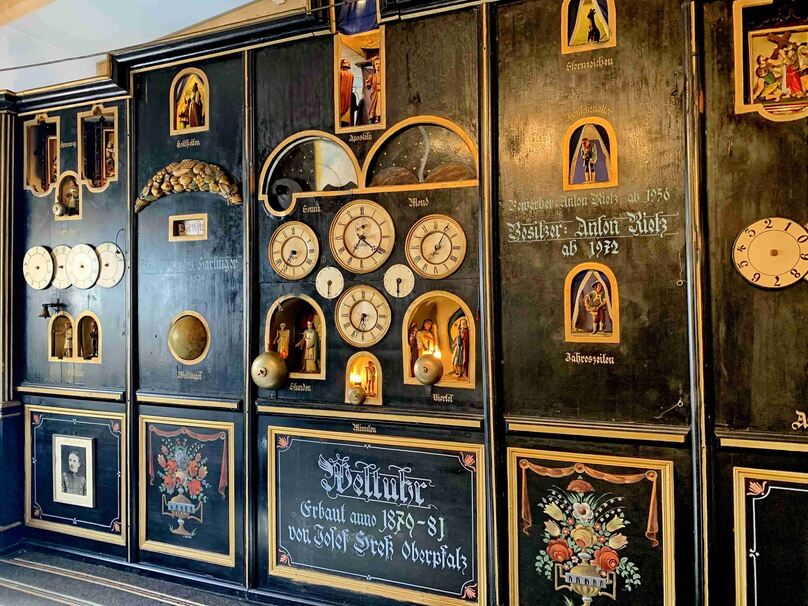
The Gocklwirt World Clock – the world's largest art clock by Josef Greß
Share
"In Bavaria, clocks tick differently" – this phrase is often heard when discussing Bavarian attitudes to life and peculiarities. The fact that Bavaria also has a clock that is unique in the world is thanks to an ingenious builder from Upper Palatinate.
After a long period of renovation, the world's largest art clock is back in its former glory. The "World Clock" can be seen and admired at the Gocklwirt Inn in Stephanskirchen am Simssee. It arrived there after a challenging time before being acquired by Anton Rietz, the innkeeper.
The 5.35-meter-wide, three-meter-high, and 1,250-kilogram masterpiece was built by Josef Greß, a farmer's son from Trosendorf in the Cham district of Upper Palatinate. Greß worked tirelessly and inventively for three years from 1879 to 1881, assisted by his brother Baptist.
The clock features 50 handcrafted figures and is composed of 470 gears and individual parts. A total of 14 dials adorn the clock, displaying the times of Europe's major cities, as well as the date, month, and leap years.
The Mammoth Clock has, among other things, the following components and messages: minute and quarter strikes, the four ages of man (child, youth, man and old man), the guardian spirit (for the first three ages of man), a musical clock that plays two pieces after it has rung, the seven pagan deities, the four seasons, the twelve signs of the zodiac (each remains visible for one month), a globe that rotates on its axis every 24 hours, the sun, moon and stars, the Passion of Christ (two stations every day for a total of 14 stations), Christ and the 12 Apostles (who pass before Christ every 12 hours, each Apostle bowing except for Judas, and Christ blesses them) and the rooster that crows three times when the Apostles pass by Christ.
Three years closed off from the outside world – completed in 1881
In order to create this enormous work, the builder withdrew completely from the outside world for three years. The excessive strain led to serious health problems – and he also had to go into heavy debt.
When Josef Greß died shortly after completing his work in 1881, his brother Johann Baptist Greß took over his legacy. For 30 years, he toured German cities and major markets, giving demonstrations.
It was transported in 30 crates by horse-drawn cart and by rail. When Johann Baptist Greß died in 1918, shortly before the end of the First World War, the clock was brought to Friedberg near Augsburg. His widow gave it to her nephew, and the art clock ended up in a storage room.
When it was accidentally discovered there in 1928 by Hohenpeißenberg miner Ludwig Hartinger, he and the old clockmaker Fuchs spent considerable time restoring the World Clock. Hartinger took the clock on tour again until 1933. He hid it during World War II, and when he moved into his own house in Wiechs near Bad Feilnbach in 1956, he once again had room for the marvel, which then attracted visitors from home and abroad.
In 1972, due to his age, he gave the art clock to Anton Rietz, an innkeeper in Weinberg near Baierbach am Simssee. The "Gocklwirt" had spent 16 years negotiating to acquire it. Since then, he has presented the rarity in a dedicated room, overseeing its continued existence, and offering demonstrations for groups of 10 or more people, or by appointment.
Source: sammerbergernachrichten.de

